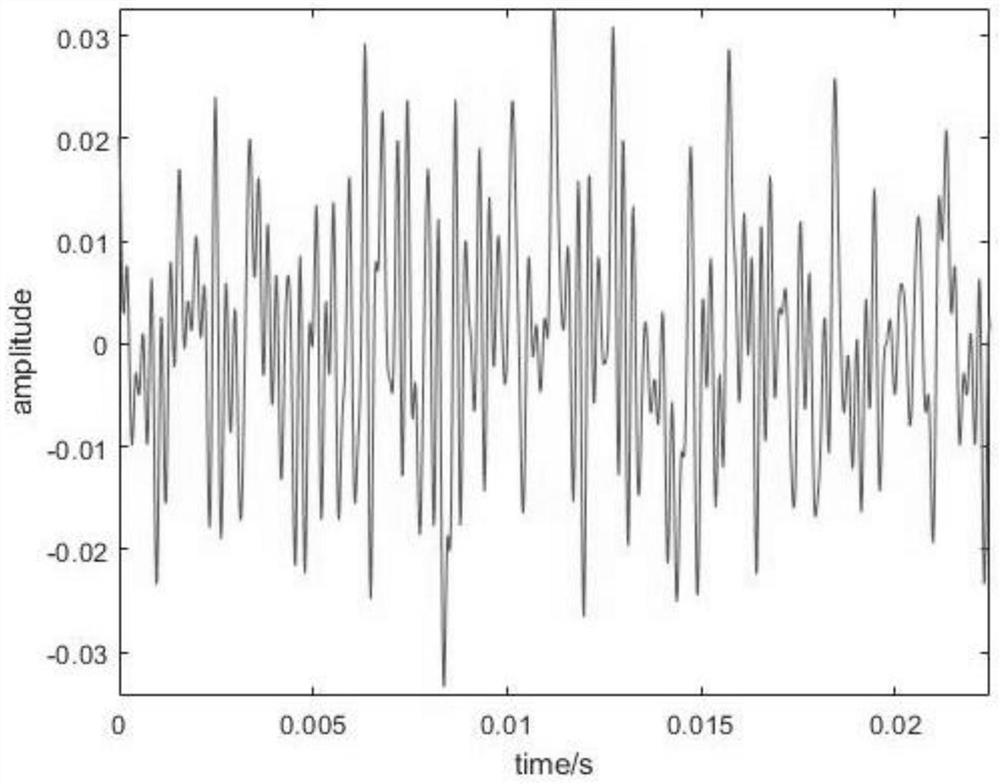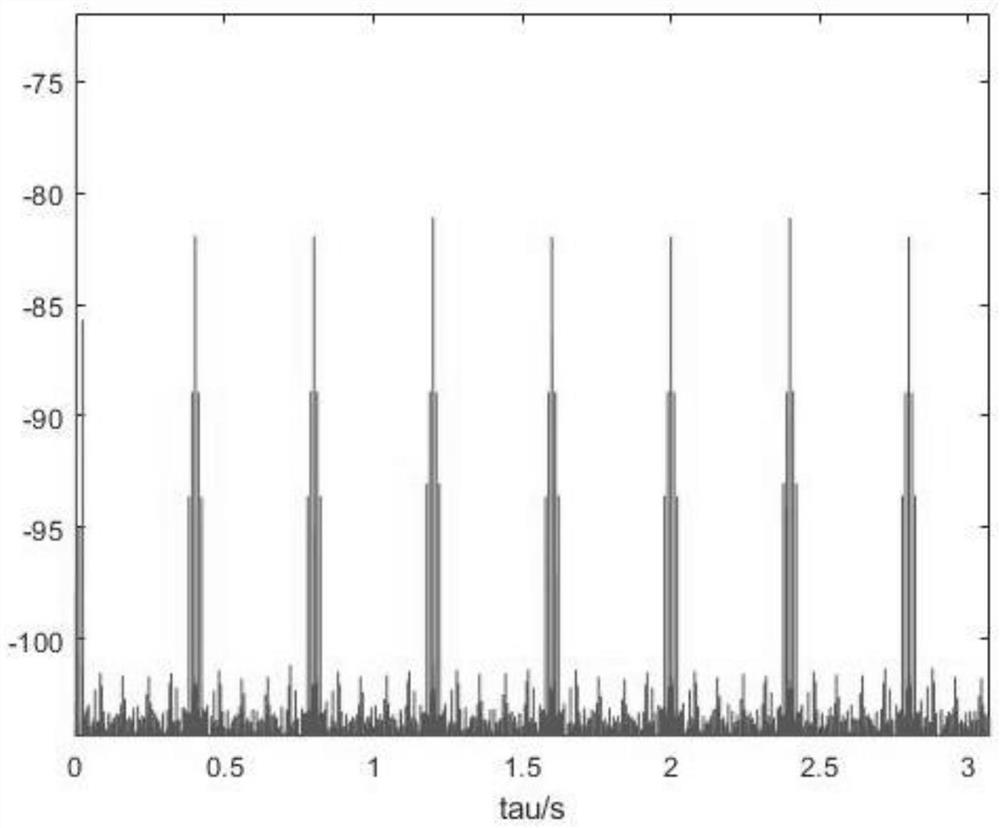Self-correlation-based DRM signal identification method under non-ideal channel
A signal identification, non-ideal technology, applied in the baseband system, baseband system parts, digital transmission system, etc., can solve the problem of low accuracy of DRM signal identification, achieve low identification accuracy, improve identification accuracy, and solve the problem of identification difficult effect
- Summary
- Abstract
- Description
- Claims
- Application Information
AI Technical Summary
Problems solved by technology
Method used
Image
Examples
specific Embodiment approach 1
[0028] Specific implementation mode 1: In this implementation mode, a specific process of a DRM signal identification method based on autocorrelation in a non-ideal channel is as follows:
[0029] Step 1: Select the data recorded by the IQ dual-channel receiver, and record the selected time domain signal as X(t);
[0030] Step 2: Normalize the time-domain signal X(t) selected in Step 1 to obtain a normalized signal The time domain waveform of the signal is obtained as figure 2 shown;
[0031] Step 3: Calculate the normalized signal The autocorrelation function R(τ), the value range of the autocorrelation delay τ is not less than [-1.5T frame ,1.5T frame ](The value range of autocorrelation delay τ must at least include the mentioned interval. For example, the range is not less than [-1.5,1.5], then the actual range can be [-2,2], but not [-1 ,1]); the processing result is as follows image 3 shown;
[0032] Step 4: Select an appropriate threshold value Thd3, compare ...
specific Embodiment approach 2
[0039] Specific embodiment two: what this embodiment is different from specific embodiment one is that, in described step one, the data that IQ dual-channel receiver is taken in is selected, and the time domain signal that selects is denoted as X (t); Concrete process for:
[0040] Select the data recorded by the IQ dual-channel receiver, and the time length of the selected data is greater than the transmission frame time length of the two DRM signals;
[0041] The transmission frame time length of the DRM signal is T frame .
[0042] Other steps and parameters are the same as those in Embodiment 1.
specific Embodiment approach 3
[0043] Embodiment 3: The difference between this embodiment and Embodiment 1 or 2 is that in the step 2, the time domain signal X(t) selected in the step 1 is normalized to obtain a normalized signal The time domain waveform of the signal is obtained as figure 2 Shown; the specific process is:
[0044] Step 21: Find the time mean value of X(t), record the time mean value as m X ;
[0045] Step 22: Find the standard deviation of X(t), record the standard deviation as σ X ;
[0046] Step two and three: based on the time mean m X and standard deviation σ X , to obtain the normalized signal X(t).
[0047] Other steps and parameters are the same as those in Embodiment 1 or Embodiment 2.
PUM
 Login to View More
Login to View More Abstract
Description
Claims
Application Information
 Login to View More
Login to View More - R&D
- Intellectual Property
- Life Sciences
- Materials
- Tech Scout
- Unparalleled Data Quality
- Higher Quality Content
- 60% Fewer Hallucinations
Browse by: Latest US Patents, China's latest patents, Technical Efficacy Thesaurus, Application Domain, Technology Topic, Popular Technical Reports.
© 2025 PatSnap. All rights reserved.Legal|Privacy policy|Modern Slavery Act Transparency Statement|Sitemap|About US| Contact US: help@patsnap.com



